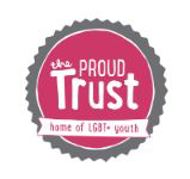Pronouns are words we use to talk about ourselves or others.
Pronouns are part of how people express their gender. Some people may use different pronouns for themselves. For example, a non-binary person might be okay with using she/her pronouns and they/them pronouns. If someone uses more than one set of pronouns, ask which one they want you to use. What they prefer might change depending on where they are or who they’re talking to.
Some people use neopronouns or nouns to talk about themselves. Neopronouns are new pronouns that don’t fit the usual idea of male or female.
You can’t know someone’s pronouns just by looking at them. This is why it’s important to ask people what pronouns they use and to share your own pronouns. This is even if you’re not transgender or gender non-conforming. If you make a mistake, say sorry, correct it, and continue the conversation.
Using the right pronouns shows respect for a person’s gender identity. Refusing to do so is disrespectful and dismisses who they are.
Examples of pronouns
|
he/him/his |
traditionally masculine pronouns |
|
she/her/hers |
traditionally feminine pronouns |
|
they/them/ theirs |
plural or gender neutral pronouns |
|
ze/zir/zis |
neopronouns |
|
xe/xem/xyr |
neopronouns |
Young people who are called by their correct names and pronouns experience 71% fewer symptoms of severe depression, experience a 34% decrease in suicide ideation, and a 65% decrease in suicide attempts. (Trevor Project)
The idea of gender being strictly binary – restricted to just men and women as very separate categories – seems to be a peculiar exception that grew up in Western Christian culture in the last two thousand years, rather than the universal truth it is commonly supposed to be. (Christine Burns, Trans Britain published 2021)
You can download this information as a PDF. The information was put together by SAYiT.






